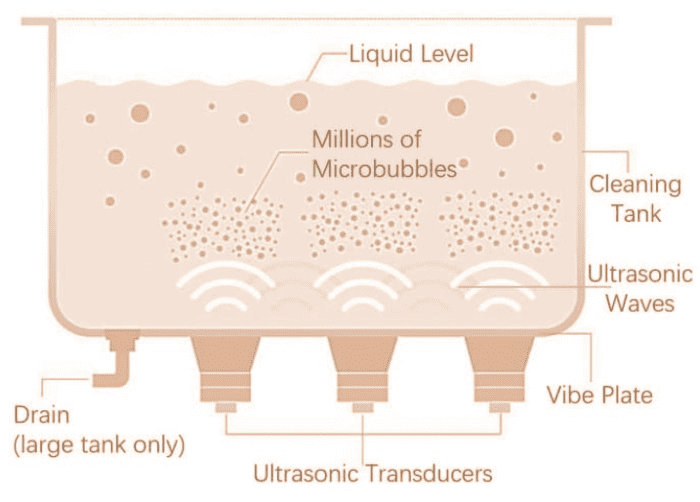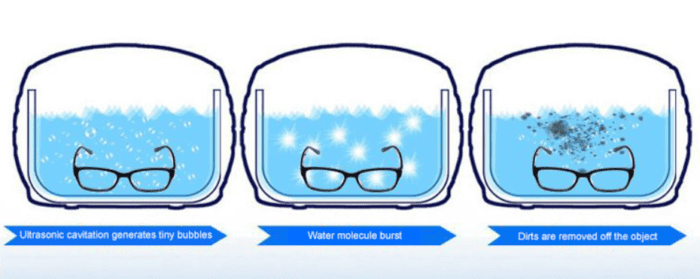An ultrasonic cleaner works by using cavitation. If you are unfamiliar with it, cavitation is the process where the agitation of a liquid causes small pockets of gas to form which explode rather than rise to the surface. Think of the bubbles that form in the wake of a speedboat and you get the idea. These exploding bubbles can, over time cause damage to such things as marine equipment but harnessed correctly they can be an incredibly powerful cleaning tool, and this is where ultrasonic cleaners come in. By using high-frequency sound waves they create tiny bubbles in a liquid solution, and as they explode they lift even the toughest dirt, grime, and grease build-up from the most hard-to-reach places.

Applications of ultrasonic cleaners.
By being able to adjust the frequency and intensity of the soundwaves, an ultrasonic cleaner can be used for anything from fine delicate jewellery to heavy industrial parts. This versatility is also reflected in the fact that they come in a lot of different sizes, anything from a small benchtop model that looks like a regular kitchen appliance, all the way through to a large ultrasonic cleaner such as the ones that can be seen at specialists such as https://www.hilsonic.co.uk/. This makes them ideal for use in a wide range of industries as well as in many household applications. Medical equipment can be thoroughly sterilised in this way, along with laboratory tools and pet-related items.
The increasing affordability of ultrasonic cleaners will no doubt bring about the widespread use of this powerful cleaning tool. Anybody who has worked on restoration projects will know the difficulty of carefully cleaning parts whether it is furniture, car engines, or cycle parts, but with an ultrasonic cleaner, this becomes as simple as pressing a few buttons.

The power of nature.
By utilising a natural phenomenon, and manipulating and enhancing it, these ingenious machines have revolutionised the cleaning process in homes, laboratories, and factories. The study of the cavitation process has already led the way in producing more efficient pumps and turbines needed for the renewables industry.